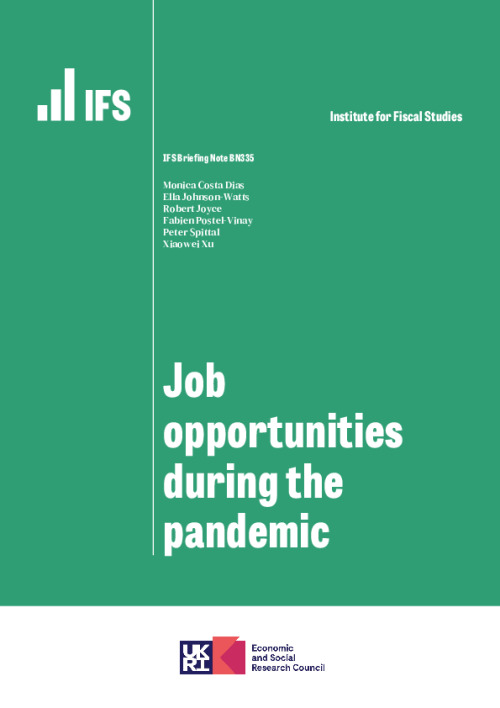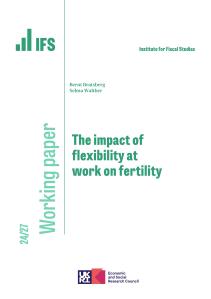Reports of encouraging job vacancy numbers, and of serious labour shortages in certain sectors, dominate newspaper headlines as we emerge from the pandemic. These raise important questions. How does the highly variable situation across different sectors translate into different sets of opportunities and career prospects, and hence the likelihood of long-term economic ‘scarring’ from the pandemic, for different kinds of workers? To what extent do labour shortages reflect short-term bottlenecks as large numbers of workers seek new work, and large numbers of firms ramp up activity, simultaneously; and to what extent do they reflect more fundamental, durable challenges in our post-pandemic economy due to a mismatch between demand for certain skills and the supply of them?
In this note, we address these questions by bringing together fine-grained data on the demand and supply sides of the labour market up to the summer of 2021. We draw on vacancy data from Adzuna, which cover all online job adverts, along with data on the characteristics and job background of workers and jobseekers from the Labour Force Survey. Our main innovation is to employ a measure of job opportunities and job competition for each worker or jobseeker, based on job openings in the full range of occupations that someone in their line of work typically moves into. We show that the severe shortages experienced in some sectors are not representative of the economy as a whole and that the aggregate recovery of vacancies masks diminished opportunities for a large share of workers.
Key findings
- Layoffs and furloughing during the pandemic were heavily concentrated in close-contact service roles. But the number of new job openings fell sharply across the whole economy: in four-fifths of occupations, vacancies in Spring 2020 were less than 30% of their usual level.
- People normally change jobs and occupations over their careers, so a very large fraction of workers – well beyond just those in locked-down sectors when the pandemic hit – would have found their typical career routes closed off. We develop a way of measuring this reduction in new job opportunities facing each worker, given the set of occupations that someone in their line of work would typically move into and vacancy trends in those occupations. We estimate that for nearly three-quarters of the workforce, opportunities were below 30% of their usual level in the Spring of 2020. That compares with 14% of workers who were actually furloughed or laid off.
- Overall job vacancies now slightly exceed their pre-pandemic levels. However, because the mix of occupations being advertised is not the same as it was before the pandemic, we estimate that new job opportunities remain more than 10% below pre-pandemic levels for a quarter of the workforce (or 8.1 million people).
- The recent recovery in vacancies has been strongest in traditionally lower-paid occupations. This largely, though not entirely, reflects the surge in road transport driving and storage vacancies. In fact, as of June 2021, vacancies in the lowest-paying third of occupations (when ranked according to pre-pandemic wage levels) are now 19% higher than pre-pandemic, while vacancies in other occupations have only just returned to pre-pandemic levels.
- For people in search of new jobs, vacancies are only half of the story: the number of other people looking for such vacancies also matters for how easy it is to find a job. We estimate that competition for new jobs among unemployed former road transport drivers is well below pre-pandemic levels. Job competition in a handful of other fields, including waiters and bar staff, also looks low compared with pre-pandemic. This is consistent with high-profile media reports about worker shortages in these sectors.
- However, for the majority (64%) of unemployed workers, competition for relevant new job openings is at least 10% greater than pre-pandemic. If some of the still-furloughed workers join the pool of unemployed jobseekers when the furlough scheme ends, competition would be stiffer still. The handful of high-profile labour-shortage occupations – while real, and causing real problems for the supply of certain goods – should not mislead us into thinking that worker power is back.
- The broad picture of buoyant vacancies in aggregate, but shortfalls of new job openings for many people alongside significant increases in opportunities for a minority, is seen across education levels, age groups and ethnicities. This suggests that a granular approach to tracking the labour market recovery and supporting those who are struggling will be necessary: a focus simply on broad groups (such as ‘the young’) may have a place, but it will not be enough. Much currently depends on the specific skill sets people have and the line of work they are in.
















